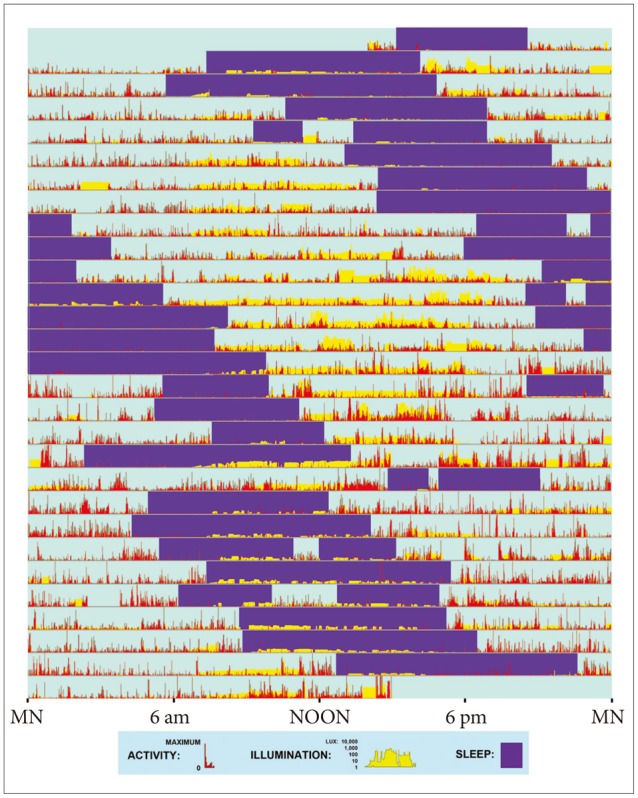Figure 4.

Actigraphic record provides an example of a non-24-hour sleep-wake rhythm. This patient wore a wrist activity-light monitor for 4 weeks (starting and ending about 2 PM). On each day (consecutive horizontal lines), the red vertical bars show relative wrist activity, indicating wakefulness. Purple rectangles highlight intervals of predominant inactivity, inferred as sleep with assistance of the patient's sleep log. Vertical yellow bars display the patient's illumination surroundings, plotted on a semi-logarithmic scale of lux (from 1 lux, e.g., full moonlight to 10,000 lux, e.g., bright sunlight.) Note that on many days, the patient experienced little or no daylight. This patient habitually retired to bed an hour or two later each day and awakened correspondingly later (25.4 hr. cycle.) His sleep drifted around the clock, with only minimal pattern irregularities suggesting interactions with the environment. Brief intervals when the actigraph was removed for bathing were not edited.
